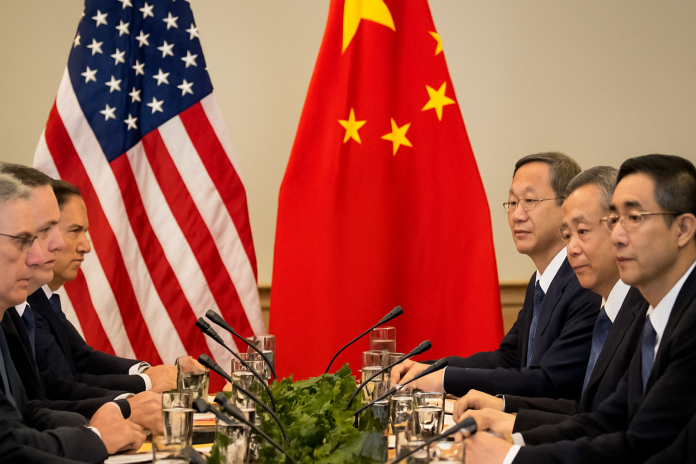The United States and China are currently holding critical trade talks in Stockholm, Sweden. These talks are being closely watched around the world, as the outcome could affect global trade and prices.
US and China Push for Trade Peace in Stockholm
The two countries are trying to settle a long-running trade dispute that has caused problems for many businesses. Both sides have been imposing tariffs—or extra taxes—on each other’s goods. This has made products more expensive and disrupted the flow of goods between nations.
At the center of the discussions is a looming deadline of August 12. By this date, the two nations must reach an agreement on tariffs. If they don’t, many tariffs could return at higher rates—some exceeding 100 percent. That means companies could end up paying more than double to import goods, which could lead to higher prices for consumers.
US officials have described the discussions as positive. The president of the United States said that the country is “very close” to finalizing a trade deal with China. He also mentioned that a basic agreement is already in place, although he didn’t offer more details.
These negotiations come just after the US reached a major trade agreement with the European Union. That deal included a 15% tariff on goods coming into the US from Europe, as well as big commitments from the EU to buy American products, including energy and military supplies.
Many hope a similar outcome can be achieved with China. The meetings in Stockholm are being led by top-level officials from both countries. The focus is to prevent more damage from the ongoing trade war and avoid new tariffs from being introduced.
US-China Trade War Escalates As Markets Crash Amid Retaliation Threats
What’s at Stake for Both Countries
The outcome of these trade talks could have serious consequences. Businesses in both the United States and China are feeling the pressure. Supply chains—the paths that goods take from factory to store shelf—have already been disrupted. A failure to reach a deal could cause even more confusion and higher costs.
The US side is trying to delay the August 12 deadline. If no agreement is reached by then, tariffs that were temporarily removed could be reinstated at very high rates. These include tariffs of up to 145% on US imports from China and 125% on Chinese imports from the US.
China, in turn, is hoping to lower existing US tariffs that total about 55% on many of its goods. It is also asking the US to relax strict rules on the export of high-tech products.
Currently, China faces multiple US tariffs. These include:
- A 20% penalty due to the fentanyl crisis
- A 10% reciprocal tariff
- A 25% tax on most industrial goods
These duties were mostly introduced during the earlier stages of the trade war. As a result, China’s trade surplus—the amount it exports more than it imports—has remained high, totaling nearly $295.5 billion in 2024.
China has said that if it increases its purchases of US products, this surplus could be reduced. This would address one of the key concerns raised by the US side throughout the trade dispute.
Tariff Windfall: U.S. Rakes in Record $113 Billion—Trump’s Trade War Pays Off
Possible Developments from the Stockholm Meeting
While no official deal has been signed yet, the tone of the Stockholm talks appears to be hopeful. One possible outcome being considered is another extension of the current tariff truce. This would allow both nations to avoid new trade penalties while continuing to work on a full agreement.
Extending the truce would also open the door for more direct meetings between top-level leaders from both sides. There is speculation that the US president may visit China later this year to further address trade and security concerns.
For now, negotiators in Stockholm are focused on avoiding a major breakdown in trade relations. The US has signaled that it wants to extend the deadline, while China has made it clear that reducing tariffs and easing restrictions are among its top demands.
Both sides understand the risks of not reaching an agreement. High tariffs could hurt businesses, raise prices for consumers, and damage economic growth worldwide. The pressure is high, and the clock is ticking.
